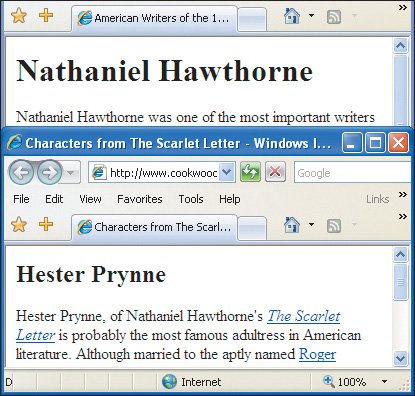Targeting Links to Specific Windows
| Targets let you open a link in a particular window, or even in a new window created especially for that link. This way, the page that contains the link stays open, enabling the user to go back and forth between the page of links and the information from each of those links. Figure 6.11. In this example, some links will appear in the characters window and others will appear in the books window. To target links: Within the link definition, type target="window", where window is the name of the window where the corresponding page should be displayed. Figure 6.12. When the visitor clicks a link with a target...
|
EAN: 2147483647
Pages: 340


 Tips
Tips